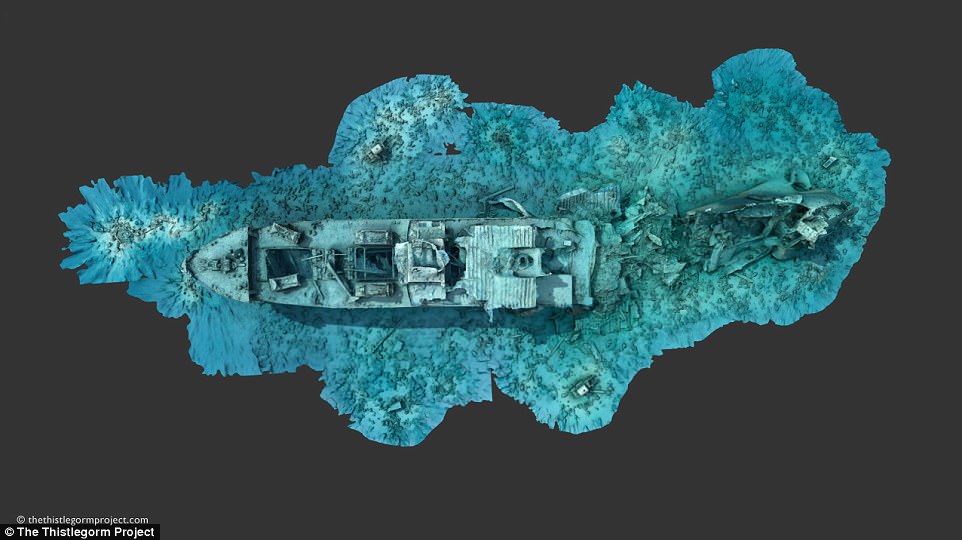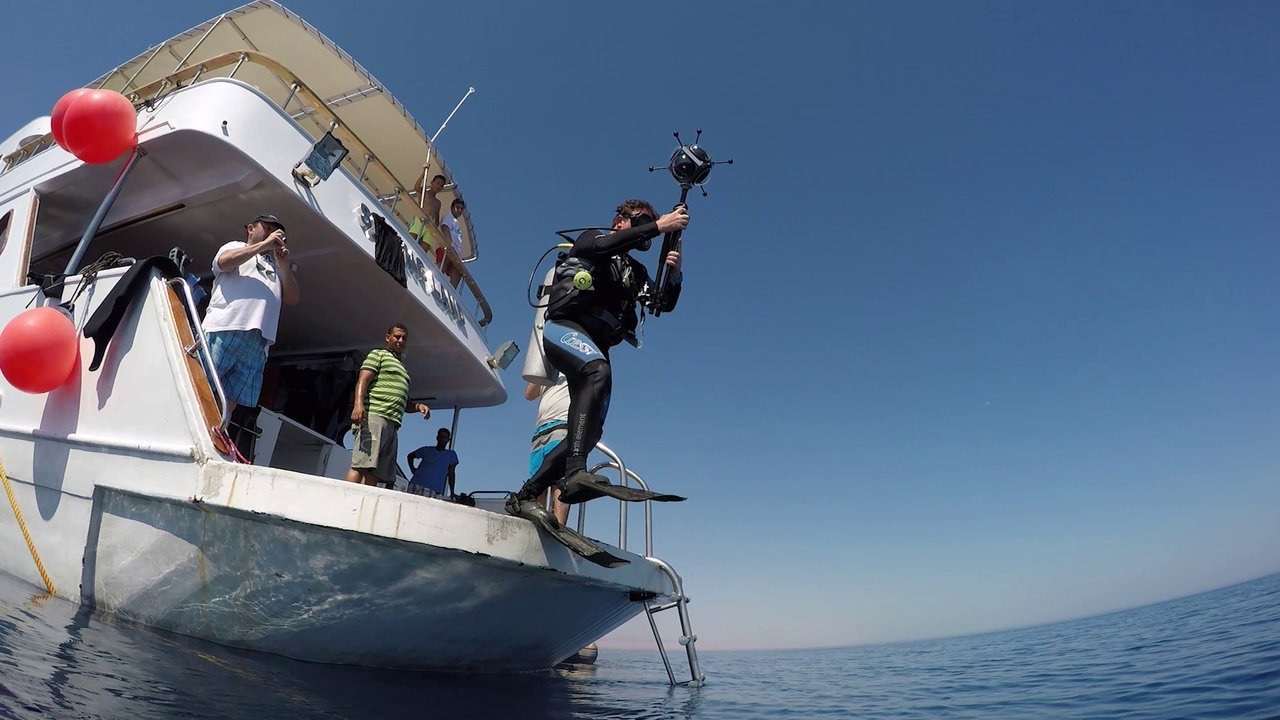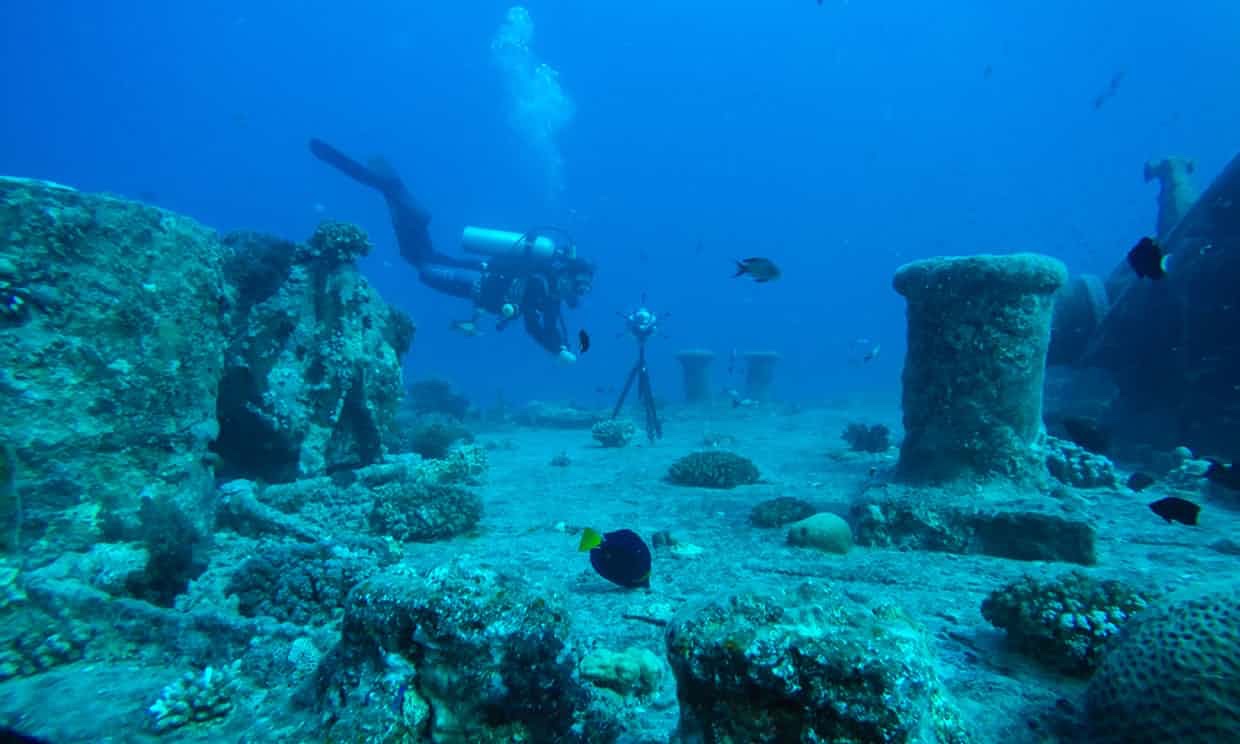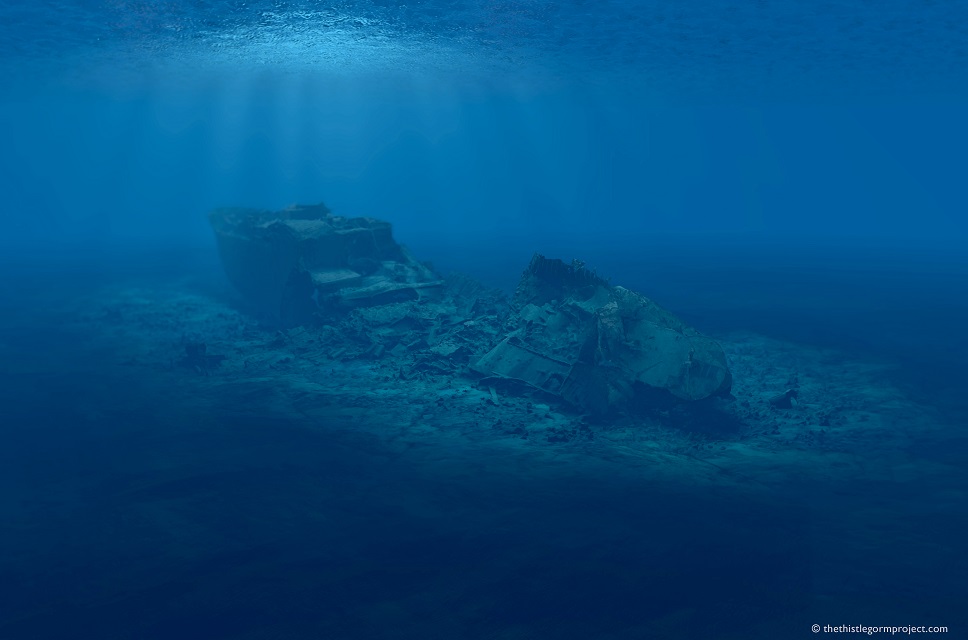VR Experience Takes You into Famed WWII Shipwreck

A new online, virtual-reality experience will bring you face to face with one of the most famous shipwreck-diving sites in the world: the British freighter SS Thistlegorm. German bombers sunk the ship in 1941 near the mouth of the Gulf of Suez at the northern end of the Red Sea.
At the time, the WWII merchant ship was carrying hundreds of tons of Allied war supplies — including tanks, train engines, trucks and motorcycles — to the Egyptian city of Alexandria.
Since the 1990s, the Thistlegorm, with its spectacular sunken cargo, has become one of the most famous wreck-diving sites in the world, said Jon Henderson, a marine archaeologist at the University of Nottingham in the United Kingdom. Hundreds of people dive on the site each day, he said. [Dive Through the WWII-Era Shipwreck with 3D Virtual Reality Images]
Henderson is the coordinator of the Thistlegorm Project, a virtual reality tour of the wreck that was released online Oct. 6, exactly 76 years to the day after German bombers sunk the ship.

The online experience combines a highly detailed 3D model of the sunken ship, based on thousands of photographs, with 360-degree underwater video of divers exploring key sections of the wreck.
Henderson told Live Science that only divers would be able to directly see most of the world's underwater heritage sites. But with virtual reality technology, the wider public can now experience the shipwreck.
"There are something like 6 million divers in the world, so less than 0.1 percent of the world's population ever gets access to these sites," he said. "But we're now at the point where we've got technology where we can reconstruct them in photo-realistic detail, and we can now create models that people can explore and interact with on their mobile phones or in their homes."
Sign up for the Live Science daily newsletter now
Get the world’s most fascinating discoveries delivered straight to your inbox.
Sunken treasures
A team of divers and archaeologists from the University of Nottingham and Egypt's Alexandria University spent five days moored above the Thistlegorm wreck, west of the tip of the Sinai Peninsula and about 18 miles (30 kilometers) by sea from the Egyptian dive resort of Sharm El Sheikh.
The team's photogrammetry specialist, Simon Brown, made 12 dives to the Thistlegorm wreck in that time, totaling more than 13 hours underwater, Henderson said. In those dives, Brown gathered thousands of photographs using a conventional Nikon camera fitted with a 6mm fish-eye lens. The camera and two strobe lights were mounted on an underwater scooter, so Brown could cover more ground during his dives.

Brown later processed and combined images of the shipwreck with photogrammetric software, which can extract 3D data from sets of 2D photographs.
The result was the highly detailed 3D model of the giant wreck, based on 24,307 photographic images — the largest photogrammetric survey yet made of a shipwreck, covering an area of about 7 acres (28,300 square meters), Henderson said.
While Brown shot the photographs for the 3D model, Henderson focused on recording 360-degree video of key points on the wreck.
Henderson said he had been inspired to apply the technology to a wreck after seeing 360-degree underwater video of a coral reef at a conference earlier this year. "I just thought, 'This would be amazing on a shipwreck,' because the 360-degree video, for me, is the closest you can come to actually diving," he said.

The researchers secured a grant from the Newton Fund in the United Kingdom for a knowledge-sharing program involving the University of Nottingham, Alexandria University and Ain Shams University in Cairo, which houses a virtual-reality laboratory. Next, the researchers chose the Thistlegorm wreck for a public-outreach project because of its well-deserved fame as a dive site, Henderson said.
"It's an absolutely amazing wreck to dive," he said. "There's the cargo — Bedford trucks, armored vehicles, motorcycles, Bren guns, ammunition, aircraft parts … and the massive steam locomotives on the decks themselves. Every time you dive on it, you find something else."
Popular wonder
The popularity of the wreck has come at a cost. Since the development of nearby Sharm El Sheikh as a diving center in the 1990s, the Thistlegorm has suffered damage from dive boats mooring directly onto the wreck and from souveniring done by some insensitive divers, Henderson said. [In Photos: WWII-Era Shipwrecks Illegally Plundered in Java Sea]
Although Egypt joined the 2001 UNESCO Convention on the Protection of Underwater Heritage in September, that convention protects only shipwrecks that are more than 100 years old. So, many World War I and all World War II wrecks in the Red Sea are not covered, Henderson said.
"What we hope this website will do is help to monitor what is going on," he said. "One of the basic things for finding out how sites have been damaged is to carry out a baseline survey such as this, and then we can start to chart changes over time."
Showing the wonders of the Thistlegorm to a wider audience would also benefit other wrecks and submerged archaeological sites in the region, he said.
"The Red Sea is an amazing resource, but we don't know what's actually in there — there has never been an official survey carried out," Henderson said. "I think once people know about this heritage, then hopefully they will start to care about it, and that will increase the level of protection, particularly for wrecks like the Thistlegorm.”
Original article on Live Science.
Tom Metcalfe is a freelance journalist and regular Live Science contributor who is based in London in the United Kingdom. Tom writes mainly about science, space, archaeology, the Earth and the oceans. He has also written for the BBC, NBC News, National Geographic, Scientific American, Air & Space, and many others.










